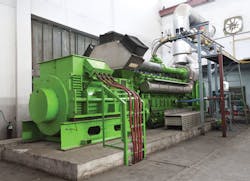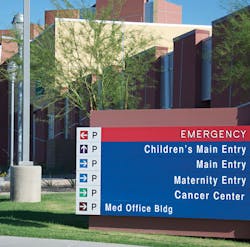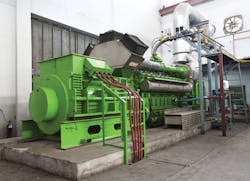Article 701: Legally Required Standby Systems
The legally required standby system can easily be a victim of confusion with optional standby systems and backup systems. And sometimes, these systems get referred to as if their names are interchangeable labels. Partly, that’s because equipment-wise these systems can look identical. However, each is very different in purpose.
They might not differ much mechanically or electrically; you could have an optional standby [Art. 702] system with the same basic design as your legally required system. Both are standby systems. However, the first isn’t mandated by law ; the second one is. This difference is why each has its own requirements in the NEC.
Some types of facilities are required to have these systems because they contain critical life support systems (Photo), and loss of power would hamper rescue. Many other reasons exist, including the protection of the public by providing power to a dangerous industrial process to permit an orderly shutdown [701.2].
Who says so?
So who exactly requires legally required systems? Any governmental agency (city, county, state, or federal) that has jurisdiction can, with the force of law, require specific types of facilities to install and maintain a standby system to support particular types of loads [701.2].
Generally, they do this via the adoption of codes and regulations that identify types of facilities and operations that must have standby systems. But the local authority having jurisdiction (AHJ) may determine that a standby system is necessary for a particular facility even though existing codes don’t explicitly specify it.
The fact a system is “legally” required just means a legal (government) entity requires it. The facility’s insurer may require a standby system, but because the insurer isn’t a government entity those systems are classified as “optional” [Art. 702].
What it does
It’s critical to understand the purpose of a legally required system. Losing sight of this during the design phase can task the system with supporting loads in a way that impairs its ability to meet the facility’s legal obligations. This problem also arises with maintenance and updates.
For example, let’s say the facility has an industrial process that, if stopped unexpectedly, could interfere with fire rescue operations. That process is why the facility was legally required to install the standby system. Now a similar line is being added, but the increased load exceeds the capacity of the standby system.
That gets us back to understanding the purpose. This system exists to provide power for legally mandated loads when the normal supply of electricity is interrupted [701.1]. So you can’t just shed loads arbitrarily to make things match back up when you shoehorn that new line into the system.
You need to know exactly which loads the system legally must support. If shedding the balance doesn’t accommodate the new line, then you can install an additional standby system or maybe increase the capacity of the existing one.
Testing
All legally required standby systems must be witness-tested upon installation (and tested periodically afterward) [701.3]. The NEC doesn’t define this testing, nor does it define “periodically.”
Fortunately, industry standards fill this gap (which is a natural consequence of the scope of the NEC [90.1]. The facility’s insurance company and the AHJ will probably insist the testing and maintenance comply with the industry standards. Always obtain the applicable installation, testing, and maintenance standards during the design phase, and have them available for the life of the system.
The NEC requires a written record of all tests and maintenance [701.3(D)]. But what does this mean in today’s age of iPads, laptops, and tablets? Paper records are increasingly being relegated to the compost bin of history. Today, testing firms use software to manage (and document) testing. Industrial maintenance departments record maintenance data into the CMMS; increasingly, that gets done in real-time via wireless devices rather keying in from paper forms.
Load selection
You must size the legally required standby system to support those loads that are legally required to be supported [701.4]. However, other loads don’t necessarily need a different means of support. The legally required standby system power source can supply both the legally required and optional loads, but only if two conditions are met:
1. The power source is big enough to handle it all.
2. Automatic selective load pickup and shedding ensure there’s always adequate power to the legally required standby circuits.
Keep in mind the size of the power source needed just for the legally required standby loads. The system may, for example, have to keep several large process lines running while also supporting power-hungry HVAC systems. This can limit its ability to also support optional loads from the same source.
Bypass
As with Emergency Systems [Art. 700], you may provide a means to bypass and isolate the transfer equipment [700.5(B)]. This isn’t a requirement; it’s permitted.
Unless there’s a good reason not to provide it (e.g., it could compromise system security), the better choice is to provide it (if your budget allows). For one thing, the bypass facilitates maintenance. If the issue is a trade-off between security and maintenance, consider installing locks and/or other controls that allow you to have both.
If the issue is cost, you might justify the exclusion if there is periodic shutdown for maintenance anyhow. But if there’s no periodic shutdown, skipping the bypass can be an expensive way to save money on construction costs.
Feedback
At a minimum, you need visual and audio feedback to indicate [701.6] when the standby source is carrying the load and when the battery charger isn’t functioning.
You also need a means of indicating derangement at the standby source. The NEC doesn’t define derangement, so what does it mean? Other standards (e.g., NFPA 99, NFPA 110) require indication of such things as low fuel, overcrank, low oil pressure, and high engine temperature. The packaged systems available from several manufacturers include all of these indicators. These systems also easily meet the other requirements.
You can design or buy a system that barely meets code, but this is a false bargain. Manufacturers offer systems with features that lower total cost of ownership while improving reliability and overall functionality.
It’s costly to save money by adopting the “What can I get by with?” mentality. You actually save money by thinking through the correct answer to “How can we ensure the standby system will reliably support the load under the conditions we impose?”
For the feedback issue in particular, you want a complete answer to the question, “How can we make sure we always know what’s going on in this system?” Consider including a designated company spokesperson in “we,” so if there’s an incident that person (promptly notified) has additional time to prepare a statement.
Alternate power requirements
The standby system must have alternate power within 60 sec. of the loss of the normal supply [701.12]. The requirements for the various types of alternate power sources are outlined in Part III. These types are:
• Storage battery
• Generator set
• Uninterruptible power supply (UPS)
• Separate service
• Connection ahead of service disconnect
• Fuel cell system
• Unit equipment.
Overcurrent protection
The branch circuit overcurrent protective devices (OCPDs) must not be accessible by unauthorized personnel [701.25]. One way to apply this requirement is to use separate panels for standby power and keep them locked.
Selective coordination of the OCPDs is required [701.27]. The nature of these systems (being legally required) creates a higher standard for selective coordination than simply forcing the field electricians to attempt this ad hoc from whatever installation drawings they might have. Make sure you commission a selective coordination study during the design process. The 2014 NEC added an entire paragraph addressing this issue [701.27]. It explicitly says the study must be done by a qualified person, and it provides guidance on what qualifications are acceptable.
Stand by me
For the electrician the main difference between a legally required standby system and an optional standby system is the set of NEC requirements for each, not the equipment itself. Confusion on this point can mean errors during installation, upgrades, or maintenance.
Making matters even more confusing, a given site could have two nearly identical standby systems and only one of them is legally required. For any standby system, consider including a reference to the appropriate Chapter 7 Article right in the title block of the system drawings. For legally required systems, that would be Art. 701.
Lamendola is an electrical consultant located in Merriam, Kan. He can be reached at [email protected].
About the Author

Mark Lamendola
Mark is an expert in maintenance management, having racked up an impressive track record during his time working in the field. He also has extensive knowledge of, and practical expertise with, the National Electrical Code (NEC). Through his consulting business, he provides articles and training materials on electrical topics, specializing in making difficult subjects easy to understand and focusing on the practical aspects of electrical work.
Prior to starting his own business, Mark served as the Technical Editor on EC&M for six years, worked three years in nuclear maintenance, six years as a contract project engineer/project manager, three years as a systems engineer, and three years in plant maintenance management.
Mark earned an AAS degree from Rock Valley College, a BSEET from Columbia Pacific University, and an MBA from Lake Erie College. He’s also completed several related certifications over the years and even was formerly licensed as a Master Electrician. He is a Senior Member of the IEEE and past Chairman of the Kansas City Chapters of both the IEEE and the IEEE Computer Society. Mark also served as the program director for, a board member of, and webmaster of, the Midwest Chapter of the 7x24 Exchange. He has also held memberships with the following organizations: NETA, NFPA, International Association of Webmasters, and Institute of Certified Professional Managers.


